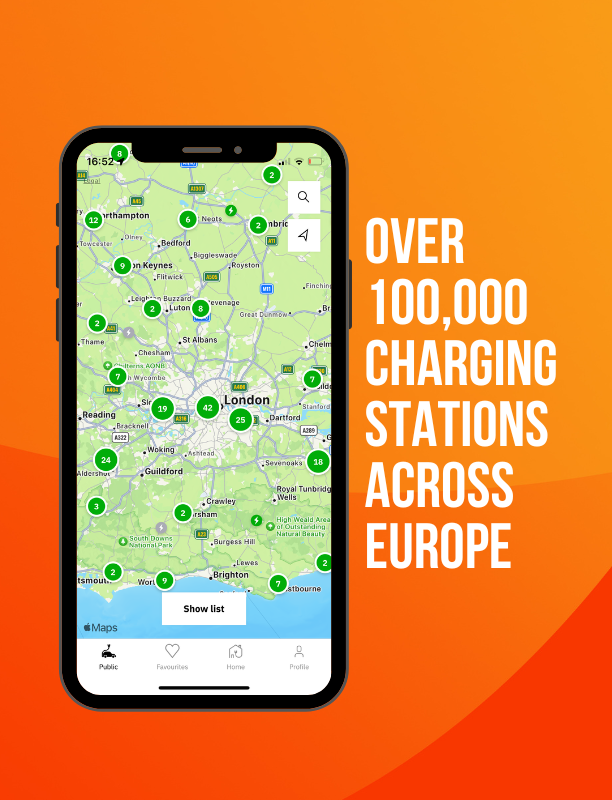Solo Traveller EV Escapes in Northern Spain
Northern Spain offers electric vehicle enthusiasts an ideal blend of safety, solitude, and stunning landscapes. For women traveling solo, the region's well-developed charging infrastructure, low crime rates, and welcoming communities create the perfect environment for an unforgettable EV adventure. This guide reveals the most scenic routes through Asturias and Castilla y León, with practical safety advice and insider tips to transform charging stops into highlights of your journey.
Why Northern Spain Is Perfect for Solo Electric Vehicle Adventures
The gentle hum of your electric motor provides the soundtrack as you wind through Asturias’ dramatic coastal roads, the absence of engine noise allowing nature’s symphony to take centre stage. For the solo EV driver seeking both tranquility and adventure, northern Spain offers an unparalleled landscape of serene backroads and hidden gems that remain refreshingly untouched by mass tourism.
With Spain’s rapidly expanding EV charging network and roads that meander through some of Europe’s most diverse terrain, the northern regions have become ideal destinations for environmentally conscious solo explorers. But what makes this area particularly special for electric vehicles?
Did you know? Spain now boasts over 15,000 public charging points providing reliable infrastructure along major routes and increasingly in rural areas.
Safety Considerations for Women Solo EV Travellers
Northern Spain generally ranks as one of Europe’s safer regions for solo women travellers, including those exploring by electric vehicle. The combination of friendly locals, low crime rates in rural areas, and the growing EV infrastructure creates a welcoming environment. However, as with any solo adventure, thoughtful preparation enhances both safety and enjoyment.
Region-Specific Safety Information
- Asturias and the Costa Verde have excellent reputations for safety, with coastal towns like Cudillero and Luarca known for their welcoming atmosphere towards solo travellers.
- Picos de Europa National Park is well-monitored by park rangers, with popular routes and viewpoints regularly patrolled, particularly during daylight hours.
- Rural Castilla y León has some of Spain’s lowest crime rates, with the main consideration being the remote nature of some areas rather than personal safety concerns.
- Most charging stations in northern Spain are located in well-lit, populated areas, often near cafés, shops or petrol stations with CCTV coverage.
Practical Safety Tips for Women Solo EV Drivers
-
Charging station selection: When using the easyCharging app, prioritise stations located in well-lit, populated areas, often near cafés, shops or petrol stations.
-
Strategic charging times: Plan longer charging sessions during daylight hours. If you need to charge after dark, prioritise stations at hotel car parks, 24-hour service areas, or well-lit town centres.
-
Accommodation choices: Select accommodations with on-site charging where possible. Many Paradores and rural hotels now offer this amenity, allowing you to charge overnight in a secure location.
-
Share your itinerary: Use the easyCharging app’s favourite stations feature to mark your planned stops, then share your charging itinerary with a trusted friend or family member so someone always knows your approximate location.
-
Local SIM card: Purchase a Spanish SIM card with good data coverage for reliable access to charging apps and navigation, especially in more remote areas of Castilla y León.
-
Backup power: Carry a portable power bank for your mobile phone to ensure you can always access the easyCharging app and emergency services, even if your vehicle’s battery is depleted.
-
Language basics: Learning a few key Spanish phrases related to EV charging and requesting assistance can be invaluable, as English proficiency varies in rural northern Spain.
-
Daytime exploration: The winding roads of the Picos de Europa and rural Soria are best explored during daylight hours — not just for safety but also to fully appreciate the spectacular landscapes.
Community Resources
The growing community of women EV drivers in Spain has created valuable networks and resources:
- Several Spanish EV forums have women-focused sections where solo drivers share experiences and advice
- The annual “Mujeres Electrificadas” meetups in cities like Gijón and León connect women EV enthusiasts and promote solo electric travel
Women solo travellers consistently report positive experiences with Spain’s EV charging infrastructure, with many noting that the scheduled stops for charging actually enhance safety by creating natural breaks and opportunities to check in with others.
The Green Coast: Asturias’ Electric Adventure
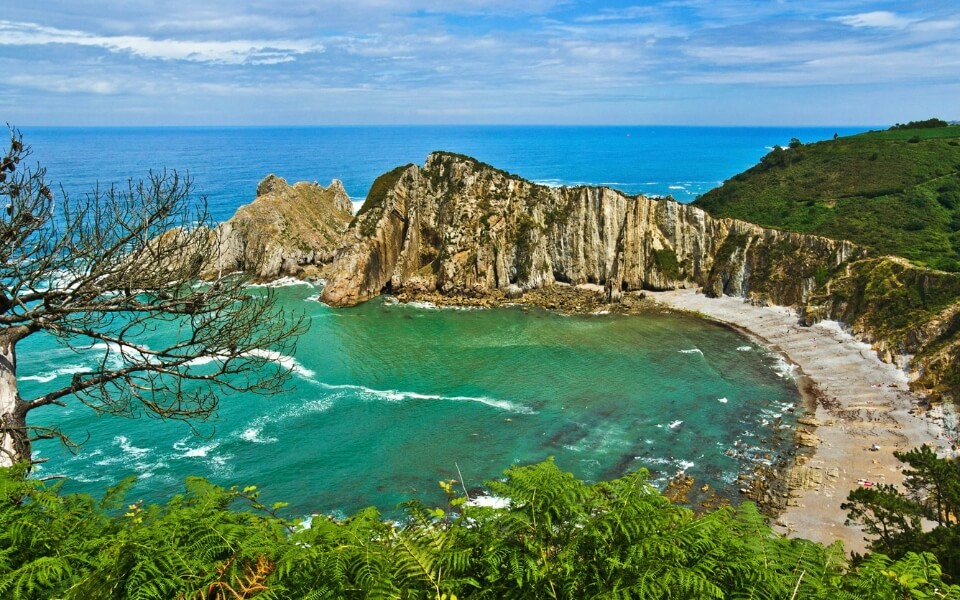 Playa del Silencio
Playa del Silencio
The Asturian Coastal Route: Where the Mountains Meet the Sea
The Costa Verde (Green Coast) of Asturias remains one of Europe’s best-kept secrets. While tourists flock to the Mediterranean, this dramatic Atlantic coastline offers breathtaking views without the crowds. The EV-friendly route from Ribadeo to Gijón winds along cliff-top roads with panoramic ocean vistas and provides access to secluded beaches where solitude is virtually guaranteed.
Charging reality: The main coastal towns of Luarca, Cudillero, and Avilés all feature reliable charging infrastructure, primarily operated by Iberdrola and Endesa X. Many chargers are strategically located near cafés or viewpoints, making charging stops a pleasure rather than a chore.
Hidden gem: Take the detour to Playa del Silencio (Beach of Silence), aptly named for its tranquil atmosphere. A 50kW fast charger in nearby Cudillero makes this detour perfectly viable for most modern EVs.
Range consideration: Coastal routes feature frequent elevation changes that can impact consumption. Allow for 15-20% more energy usage than your vehicle’s rated efficiency would suggest.
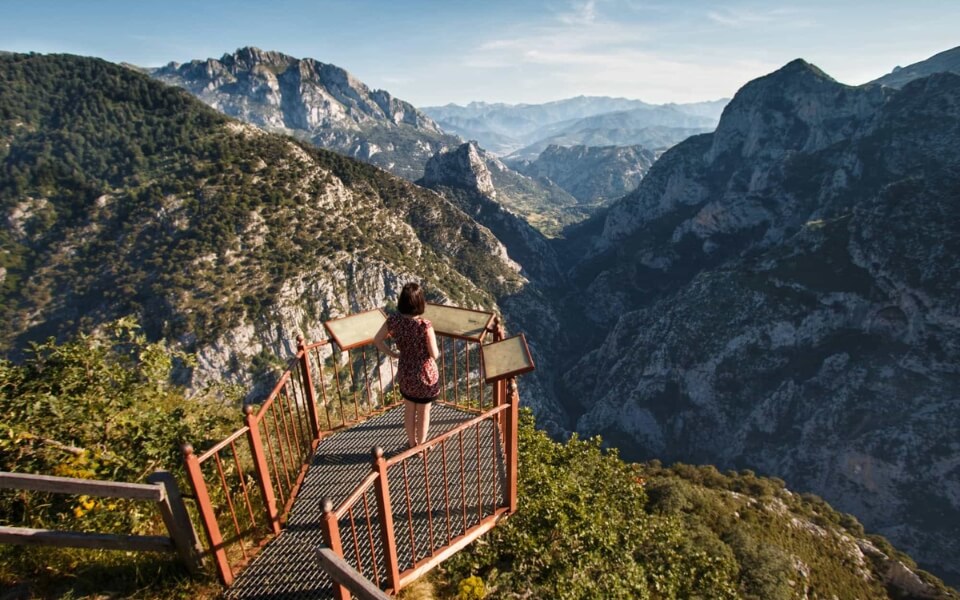 Desfiladero de la Hermida
Desfiladero de la Hermida
Navigating the Picos de Europa: EV Driving in Mountain Territory
From the coast, venture inland to the majestic Picos de Europa National Park. These limestone mountains present both a spectacular driving experience and unique challenges for EV drivers. The winding road through the Desfiladero de la Hermida gorge features towering cliffs that create an almost mystical atmosphere.
EV range reality check: The steep ascents in the Picos de Europa can reduce your vehicle’s range by up to 40%. However, regenerative braking on descents helps recover some of this energy—an advantage unique to electric vehicles.
Charging infrastructure: Fast chargers (50kW) can be found in the gateway towns of Cangas de Onís and Potes, operated by Iberdrola. The popular Fuente Dé cable car station also offers destination charging while you explore.
Solo traveller tip: The viewpoints along this route often have convenient pull-offs where you can safely park your EV and take in the scenery. Particularly recommended is the Mirador del Pozo de la Oración, which offers stunning panoramas with minimal crowds.
What about winter? These mountain routes remain accessible year-round, though winter driving requires careful planning. The reduced efficiency of EV batteries in cold weather (potentially 20-30% range reduction) should be factored into your journey planning from November through March.
The Interior Routes: Castilla y León’s Electric Highways
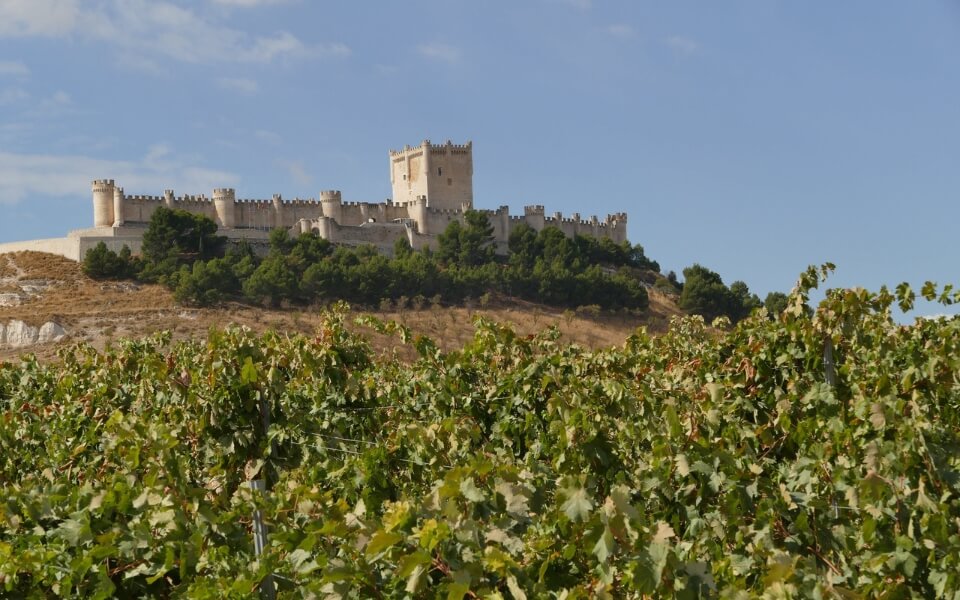 Ribera del Duero
Ribera del Duero
The Duero Valley Wine Route: Vineyards and Voltage
For the solo traveller who appreciates culinary experiences, the lesser-travelled roads through the Ribera del Duero wine region offer a perfect combination of scenic driving and gastronomic discovery. The route from Aranda de Duero to Peñafiel winds through vineyards and medieval villages with minimal traffic.
EV advantage: Several forward-thinking wineries along the Ribera del Duero route have installed destination chargers (typically 11kW or 22kW), including acclaimed establishments like Bodegas Protos in Peñafiel and Bodegas Portia near Gumiel de Izán. These allow you to top up your battery whilst enjoying a private tasting.
Terrain considerations: The Duero Valley features gentle rolling hills that have minimal impact on EV range. This region is ideal for maximising your vehicle’s efficiency, with consumption typically matching or even beating manufacturer ratings.
Hidden gem: The medieval village of Langa de Duero, with its castle ruins and ancient cellars carved into the hillside, offers a glimpse into Spain’s winemaking heritage. A recently installed 22kW charger in the main square makes this detour accessible to all EVs.
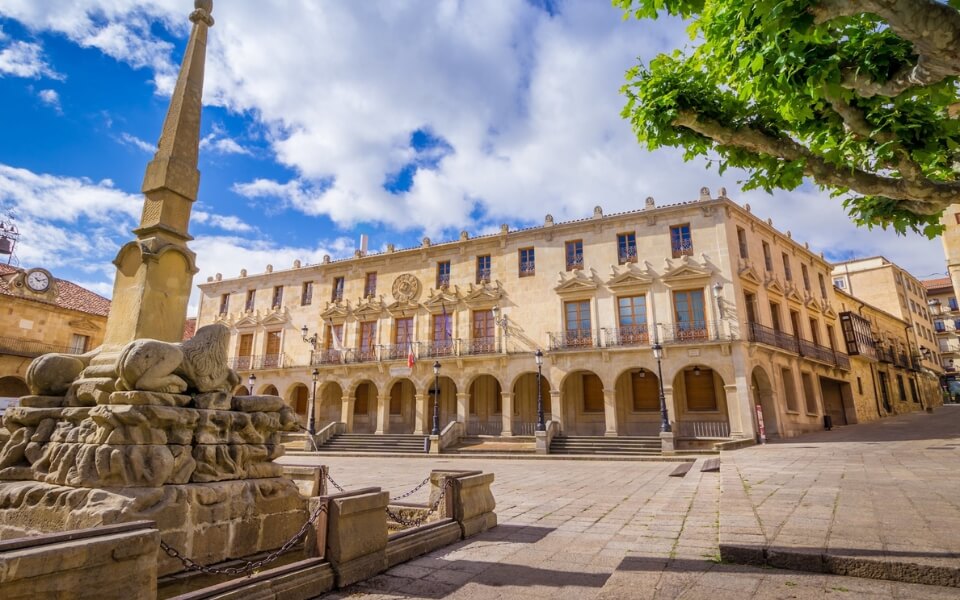 Soria province
Soria province
The Forgotten Villages Route: Medieval Treasures and Modern Technology
The province of Soria is perhaps Spain’s least visited region, making it perfect for solitude seekers. The route connecting the medieval villages of Calatañazor, El Burgo de Osma, and Medinaceli takes you through landscapes that seem frozen in time.
Charging reality: While this region was previously challenging for EVs, strategic investment has placed chargers (typically 22kW AC) in key historic towns. El Burgo de Osma and Almazán now feature reliable charging stations operated by local utility companies and the Repsol network.
Range optimisation tip: The high plateau (meseta) of Castilla y León features significant temperature variations that can affect battery performance. During summer months, setting off early can reduce the need for climate control and extend your range by 10-15%.
Practical Guidance for Solo EV Travellers in Northern Spain
Essential Apps and Networks for Stress-Free Charging
The key to a seamless electric journey through northern Spain is knowing which tools to use. The easyCharging app stands out as an excellent all-in-one solution for solo travellers exploring Spain’s northern regions:
easyCharging App Benefits:
- Access to over 100,000 charging points across Europe, including comprehensive coverage in northern Spain
- All-in-one solution: find, charge and pay within a single app interface
- Real-time filters for both charging speed and availability—crucial when planning routes through the Picos de Europa or rural Castilla y León
- Order your free RFID card for backup when mobile coverage is limited in mountainous areas
- No contracts or subscription fees—simply pay for what you charge
- Detailed monthly statements with complete charging history
- Compatible with all major European electric vehicles and plug types
- Mark your favourite stations for easy access on future trips
Other useful apps with complementary features for the region include:
- Electromaps: Particularly strong for user reviews in Spain
- Iberdrola Public Charging: For accessing Spain’s largest charging network
- Endesa X JuicePass: Covers many tourist locations with reliable fast chargers
Local knowledge: Unlike some European countries, Spain doesn’t have a fully unified charging system. Having the easyCharging app with its comprehensive network access simplifies the experience considerably.
Making the Most of Charging Stops
Smart journey planning transforms necessary charging stops from inconveniences into highlights of your adventure. With proper planning using the easyCharging app, solo travellers can identify charging opportunities near points of interest:
- Find fast chargers near Oviedo’s historic centre while you explore the cathedral
- Save favourite charging stations in the app for easy access along your preferred routes, creating a personalised network across northern Spain
- Plan longer stops at slower (and often cheaper) chargers while enjoying a leisurely lunch in places like Cangas de Onís or Burgo de Osma
- Leverage the app’s charging speed filters to discover optimal charging locations that fit your vehicle and schedule
- Use the transparent pricing information to budget effectively for your journey through northern Spain
The Solo EV Traveller’s Kit List for Northern Spain
Beyond the usual travel essentials, solo EV explorers in northern Spain should consider:
- A Type 2 charging cable (up to 22kW) for access to all AC charging points
- The easyCharging RFID card (ordered through the app) for backup when mobile reception is limited
- Offline maps downloaded to your phone (signal can be patchy in mountain areas like the Picos de Europa)
- A basic adapter for occasional use of domestic “Schuko” sockets (limited to 10A/2.3kW in Spain)
- A portable 4G router if your vehicle relies on connectivity for charging location updates
The Solo Electric Advantage: Why EV Travel Enhances Solitude
There’s a profound synergy between solo travel and electric driving that makes this combination particularly special in northern Spain:
- The near-silent operation of EVs enhances your connection to the landscapes and allows you to hear nature’s soundtrack—from crashing Atlantic waves to the bell-like calls of griffon vultures circling over the Picos de Europa
- The rhythm of necessary charging stops encourages a slower, more mindful travel pace that solo travellers particularly appreciate
- The growing community of EV drivers creates natural conversation opportunities at charging stations, perfect for solo travellers seeking occasional human connection
- The regenerative braking experience makes mountain driving more engaging and less stressful than in conventional vehicles
Eco-Conscious Travel: Making a Positive Impact
Your choice to explore northern Spain in an electric vehicle contributes to preserving the very beauty you’ve come to experience. The Picos de Europa National Park and Costa Verde remain pristine partly because of growing sustainable tourism practices.
Many accommodations and attractions now prioritise visitors arriving in EVs, with preferred parking and charging options. The Asturian Tourism Board recently launched an eco-route initiative with dedicated EV itineraries that support local businesses committed to sustainability.
When to Go: Seasonal Considerations for EV Explorers
Each season offers distinct advantages for electric vehicle travel in northern Spain:
- Spring (April-June): Ideal temperatures for optimal battery efficiency and stunning landscapes with minimal tourism
- Summer (July-August): Busier but with longest daylight hours for driving; higher temperatures may require climate control use that impacts range
- Autumn (September-October): Perfect combination of stable weather, reduced tourist numbers, and harvest activities, particularly in wine regions
- Winter (November-March): Challenging but rewarding; reduced battery efficiency in cold weather (20-30% range reduction) necessitates careful planning
The Road Less Travelled, Electrified
In choosing to explore northern Spain’s lesser-known routes in an electric vehicle, the solo traveller embraces a form of travel that is simultaneously forward-looking in its technology and nostalgic in its pace and mindfulness.
For those willing to venture beyond the obvious destinations, Asturias and northern Castilla y León reward with moments of profound beauty and serenity. The quiet hum of your electric vehicle becomes the soundtrack to an adventure that is as much about discovering hidden landscapes as it is about rediscovering the joy of travelling at your own pace, in harmony with both nature and yourself.
The transparency and reliability provided by comprehensive tools like the easyCharging app remove the anxiety that once accompanied electric vehicle travel in remote regions. With access to over 100,000 charging points across Europe, real-time availability information, and the security of a free RFID card as backup, today’s solo EV explorer can focus on the journey rather than worry about the next charge.
So download the easyCharging app, set off from Gijón, León, or Burgos, and remember that on Spain’s peaceful backroads, the journey truly is the destination—especially when you’re travelling solo and electric.
Frequently asked questions
The charging network along main routes and in tourist areas is now robust. With apps like easyCharging providing access to over 100,000 points across Europe, including comprehensive coverage in Asturias and northern Castilla y León, you’ll rarely be more than 50km from a charger. The app’s real-time filtering for charging speed and availability is particularly valuable when planning routes through more remote areas like the Soria province.
The impact is significant but manageable with proper planning. The Picos de Europa mountains can reduce range by up to 40% on sustained climbs, while the coastal roads of Asturias typically reduce efficiency by 15-20%. The upside? Electric vehicles excel at regenerative braking, which helps recover energy on the numerous descents. The easyCharging app helps you locate suitable charging points along these challenging routes, ensuring you can confidently navigate the elevation changes.
On main highways like the A-8 coastal route and A-6 to Madrid, fast chargers (50kW+) are typically available every 50-80km. The AP-1 and AP-68 motorways feature IONITY ultra-rapid chargers (up to 350kW) at service areas. Using easyCharging’s filters for charging speed helps you quickly identify the fastest options along your route, particularly valuable for longer journeys through the region.
Yes, and the number is growing monthly. The state-owned Paradores hotel network, often located in historic buildings, has equipped most of their northern Spain locations with destination charging. Additionally, many rural accommodations (casas rurales) now offer overnight charging as a unique selling point for eco-conscious travellers. Planning your accommodation near charging points using the easyCharging app makes it easier to coordinate overnight stays with charging opportunities.

